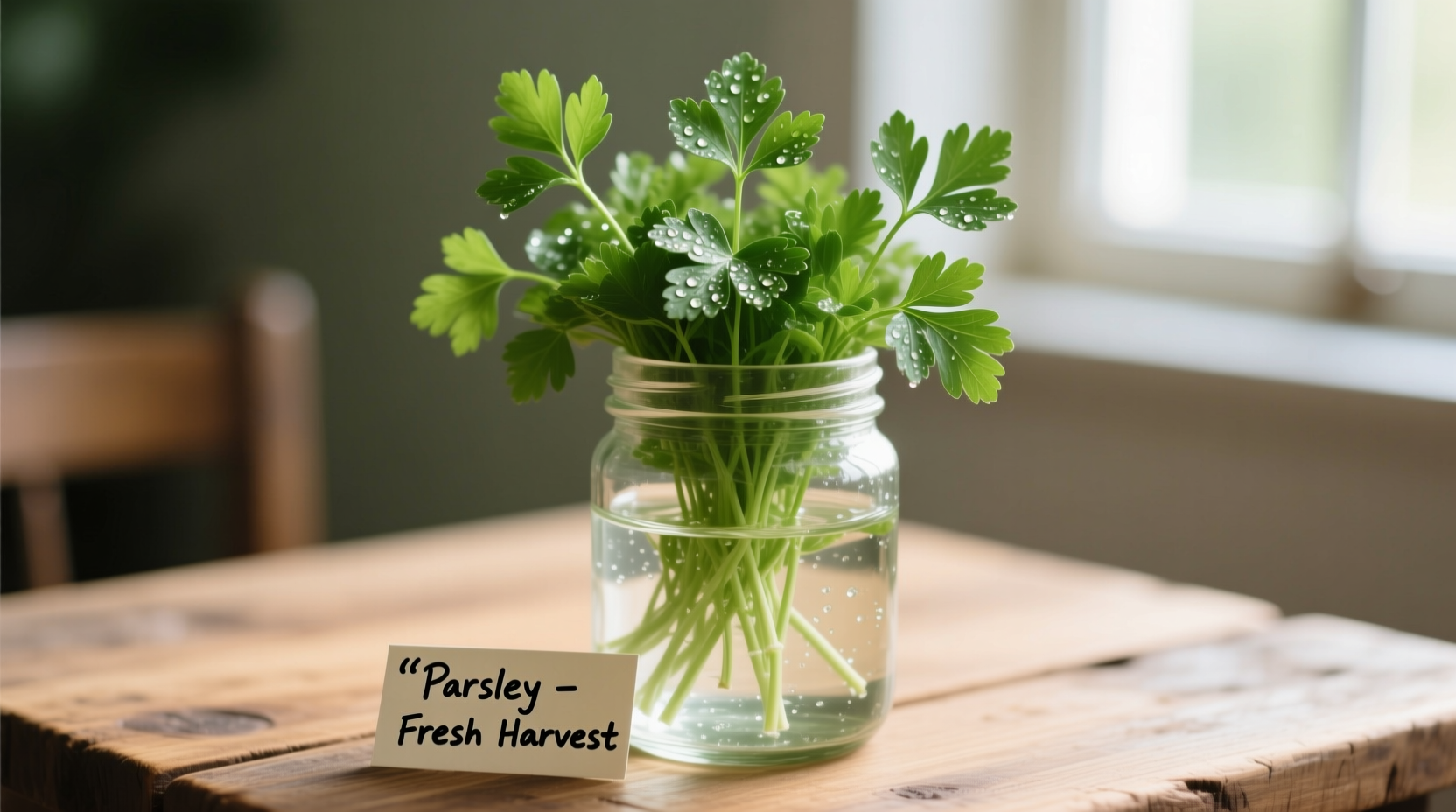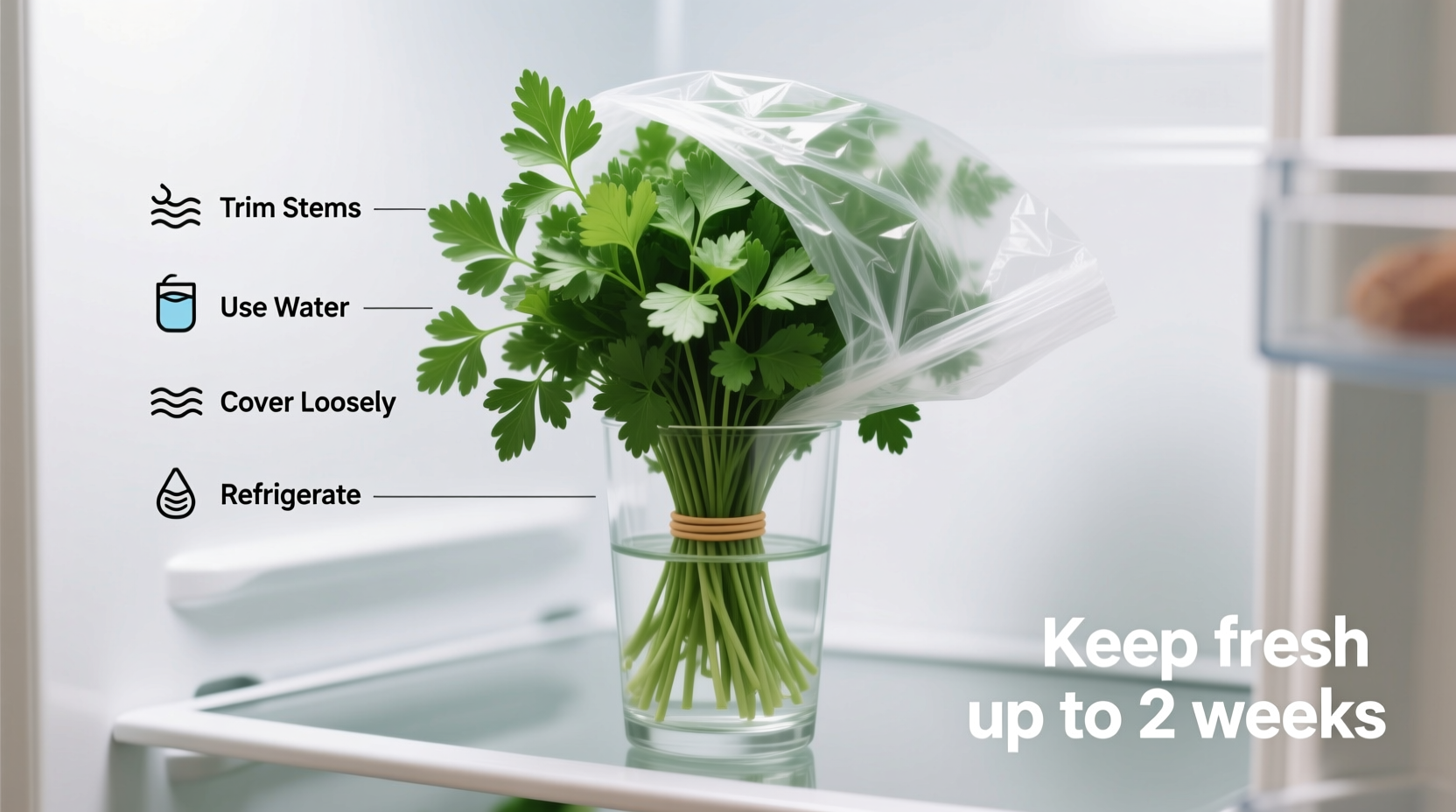The most effective way to keep parsley fresh in the fridge for 2-3 weeks is to treat it like cut flowers: trim the stems, place in a glass with 1-2 inches of water, cover loosely with a plastic bag, and store in the refrigerator's crisper drawer. Change the water every 2-3 days for maximum freshness.
Discover the professional chef's method to extend your parsley's shelf life by 300% compared to standard storage techniques. This guide reveals the science-backed approach that keeps parsley vibrant, flavorful, and crisp for up to 21 days—perfect for meal preppers, home cooks, and anyone tired of wasting fresh herbs.
Why Parsley Wastes Away (And How to Stop It)
Parsley wilts quickly because its delicate leaves lose moisture rapidly and its stems continue to respire after harvesting. According to USDA food safety guidelines, fresh herbs like parsley maintain optimal quality when stored at 32-36°F (0-2°C) with 90-95% humidity—conditions most home refrigerators don't naturally provide.
University of California's Postharvest Technology Center research shows that submerging herb stems in water while refrigerating reduces moisture loss by 65% compared to dry storage methods. This simple hydration technique mimics the plant's natural environment, significantly extending freshness.

Your Step-by-Step Parsley Preservation System
Pre-Storage Preparation (5 Minutes)
Before storing parsley, proper preparation determines whether it lasts 3 days or 3 weeks:
- Inspect and trim: Remove any yellowing leaves and trim ½ inch from the bottom of stems with sharp scissors
- Cold water bath: Submerge in ice water for 10 minutes to rehydrate and remove field heat
- Dry thoroughly: Use a salad spinner followed by gentle patting with clean kitchen towels—excess moisture promotes mold
Optimal Refrigeration Method
Follow this professional technique used in restaurant kitchens:
- Fill a standard drinking glass with 1-2 inches of cold water
- Place parsley stems-down in the water (like a bouquet)
- Cover loosely with a plastic produce bag secured with a rubber band
- Store in the main compartment of your refrigerator (not the door)
- Change water every 48 hours to prevent bacterial growth
| Storage Method | Expected Freshness | Flavor Retention | Common Issues |
|---|---|---|---|
| Water + Bag Method | 14-21 days | 95%+ retention | Requires water changes |
| Damp Paper Towel | 7-10 days | 80% retention | Drying out by day 5 |
| Original Plastic Container | 3-5 days | 60% retention | Condensation buildup |
| Sealed Plastic Bag | 4-7 days | 70% retention | Yellowing leaves |
Reviving Wilted Parsley
Even slightly wilted parsley can be restored using this technique from the Culinary Institute of America's food science department:
- Submerge completely in ice water for 15-20 minutes
- Add one teaspoon of sugar per cup of water to facilitate rehydration
- Dry thoroughly before returning to storage
This method works because the cold temperature shocks the cells while the sugar creates osmotic pressure that draws water back into dehydrated tissues.
When to Discard Parsley
USDA food safety guidelines recommend discarding parsley when you notice:
- Slippery or slimy texture on stems or leaves
- Strong ammonia-like odor (sign of advanced decomposition)
- Extensive yellowing or black spots
- Mushy texture that doesn't crisp up after ice bath
Fresh parsley should maintain a crisp snap when bent and emit a clean, grassy aroma. Properly stored parsley may develop minor browning at leaf edges but remains safe to eat if other quality indicators are good.
Advanced Storage Considerations
Different parsley varieties require slight adjustments to the storage method:
Flat-Leaf vs. Curly Parsley
Flat-leaf (Italian) parsley has thinner leaves that dehydrate faster but recovers better from wilting. Curly parsley's ruffled leaves trap more moisture but are more prone to mold. For curly varieties, increase air circulation by using a perforated bag instead of a sealed one.
Pre-Chopped Parsley
If you've already chopped parsley, maximize freshness by:
- Storing in an airtight container with a slightly damp paper towel
- Pressing plastic wrap directly against the surface to minimize air exposure
- Using within 3-4 days (chopping accelerates oxidation)
Freezing for Long-Term Storage
For preservation beyond 3 weeks, freezing is your best option:
- Chop parsley finely
- Portion into ice cube trays
- Cover completely with olive oil or water
- Freeze solid, then transfer to labeled freezer bags
Frozen parsley maintains flavor for 6-8 months and works perfectly for cooked dishes. Note that texture changes, so it's unsuitable for garnishes but ideal for sauces, soups, and stews.











 浙公网安备
33010002000092号
浙公网安备
33010002000092号 浙B2-20120091-4
浙B2-20120091-4